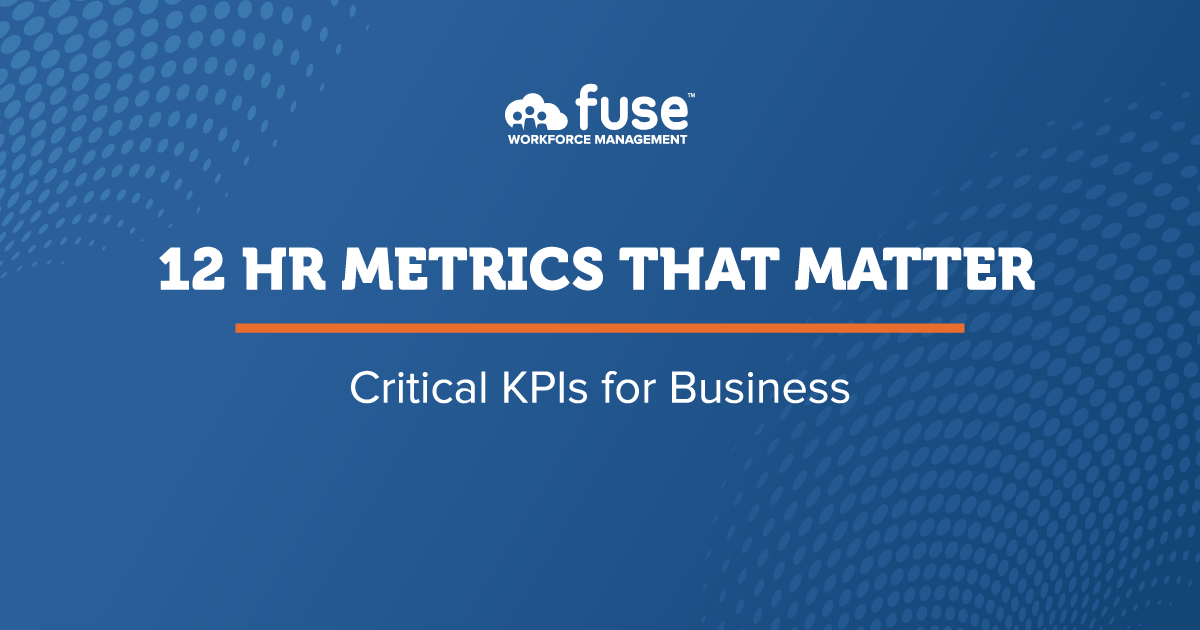It’s possible to attach a metric to just about any HR activity. However, not all HR metrics deliver the insights you need to bring value to the organization. To make informed decisions for hiring and ongoing workforce management, you’ll need to identify the HR metrics that matter the most.
Why HR Metrics Are Important
Metrics help you understand the effectiveness of your HR initiatives. They can also be useful guides for planning HR activities and programs. SHRM reports that 71% of companies consider HR analytics to be a priority – and indicates that progress to truly utilize those metrics is lagging.
With the right metrics, you can identify potential weak spots or areas where more resources are needed. For example, metrics for recruiting effectiveness can tell you if certain positions take longer to fill than others and which job posting sites yield the most or fewest candidates.
A valuable tool for the C-suite, HR metrics provide a window into HR activities and help leaders see the ROI for investment in hiring, training, and employee development.

12 HR Metrics That Matter to Your Organization
1. Time to Hire
According to LinkedIn, the time for a candidate to be hired for an open position is between 33 and 49 days. This varies based on your type of organization and the positions you need to fill, with administrative positions filling fastest and engineering roles taking the most time.
Because an unfilled position is an unproductive one, your time to hire has an impact on your organization’s bottom line. There is also a cost associated with the time you spend sourcing, selecting, and hiring candidates. As a result, it makes sense to understand and improve your time to hire for maximum recruitment efficiency.
2. Cost per Hire
The cost-per-hire metric tells you how much your organization spends to fill each position. Knowing your cost per hire is helpful for future workforce planning and budgeting, and it can tell you if you’re spending more or less than you think you should.
Calculate your cost per hire by dividing the total cost of your hiring process by the number of new employees. Be sure to include the following hiring costs:
- Job posting fees
- Staffing agency fees
- The time of recruiters
- Recruitment chatbot development fees
- Careers page maintenance fees
3. Diversity Hiring Rate
When you hire, you want to know how many hires are women or from underrepresented groups. Knowing your diversity hiring rate is helpful for company-wide EEO and diversity reporting, and it also gives you an overall sense of your ability to attract a diverse talent pool. To calculate this metric, divide the number of hires that meet your DEI goals by the total number of hires.
4. Voluntary Turnover Rate
Not all turnover is bad, particularly when an employee is a poor fit with your culture or isn’t meeting performance standards. When you know your voluntary turnover rate, you can better understand what motivates good people to leave and what you can do to keep them.
To calculate your voluntary turnover rate, divide the number of employees who leave voluntarily by the total number of employees. You can track this number over several quarters or years to give you an idea of where to make changes in order to improve retention.
5. Early Turnover
As a subset of the voluntary turnover rate, the early turnover rate tells you the number of employees who leave within their first year at the company. This metric can shed light on poor hiring decisions, gaps in onboarding, or cultural issues that may be turning off new hires early in their tenure. To calculate this metric, divide the number of employees who leave voluntarily within a year of hire by your total number of employees.
6. Employee Absence Rate
Some degree of employee absence is natural, but when the number of unscheduled absences is high and increasing, the cause can be an underlying problem in your workforce. Tracking your absence rate over time helps you uncover the possible causes, for example:
- Poor morale
- Employee stress
- Workplace illness or injury
To calculate your employee absence rate, divide the number of unscheduled absences by the number of employees. You can also compare scheduled and unscheduled absences to get a more complete picture of overall employee attendance.
7. Turnover and Absence Rate per Manager
Managers greatly influence employee behavior and attitudes at work. According to Gallup research, 52% of employees leaving a company reported that their manager or organization could have prevented them from leaving their job. Empowered, inspiring managers are the best prevention against high employee turnover. Managers impact employee commitment to the organization, how much effort employees give to their roles, and how long they stay with a company.
Teams that possess a higher turnover or absence rate may be experiencing problems with communication, organization of work, or leadership. Tracking turnover and absence rates by manager can help you pinpoint issues unique to a particular team or department.
8. Overtime Expense
Overtime is a regular occurrence for certain positions, and in some cases, employees request extra overtime as a way to increase their earnings. However, excessive overtime increases your payroll expenses considerably.
When you measure your overtime expense, you know when it’s time to implement process or system improvements to keep overtime at a manageable level. Once you know how much overtime is costing you, you can also determine if it would be less costly to hire additional employees as an alternative.
9. Employee Satisfaction
Employee satisfaction impacts other metrics, such as turnover and absenteeism, so it’s important to learn about employee experiences and what you can do to make them better.
With the help of employee satisfaction and engagement surveys, you can get a snapshot of employees’ views toward work, their managers and coworkers, and the organization as a whole. Periodic surveys also help you gauge how employees are responding to changes in culture and other aspects of their employee experience.
10. Employee Productivity
Measuring employee productivity helps you understand the output of your workforce. When you track employee output, you can see the impact of workforce performance on other metrics, such as revenue and profit. A typical calculation for employee productivity is total output divided by total input, for example, the number of products assembled during a 12-hour shift in a manufacturing plant.
Measuring employee productivity isn’t just for roles with a physical output. You can calculate the productivity of employees in service roles by measuring performance against goals, such as sales quotas and project completion rates. With a better understanding of employee productivity, you can make well-informed recommendations for employee performance ratings and incentive compensation.
11. Training Costs and Overall Training Effectiveness
These two metrics go hand in hand. Together, they tell you how well your company is spending its investment in employee development. Rising training costs without an equivalent rise in effectiveness measures can help you determine if you need to change the training or delivery methods you use.
The best way to determine the effectiveness of training depends on the type of role an employee performs. In some cases, a test or quiz after training will provide cues about employee learning. In others, a combination of self-reporting and manager evaluation can tell you where and how to redirect your training dollars.
12. Healthcare Costs
Just because healthcare costs tend to rise each year doesn’t mean you’re getting better benefits or value for the premiums you pay. Measuring healthcare costs helps you understand your benefits investment and whether it’s time to consider a new mix of benefits or insurance carriers.

Make Data-Driven HR Decisions
Within your workforce lies a treasure trove of metrics to help you understand the effectiveness of your HR programs and activities. HR metrics also deliver insights to help you make better decisions about investments in training, benefits, recruitment, and more.
Tracking the HR metrics that matter most to your organization is much easier with the right tools. All-in-one workforce management software helps you administer HR programs and track critical trends across your entire organization. Subscribe to our blog to learn more about how you can use HR metrics to make better data-driven decisions in support of your workforce.

